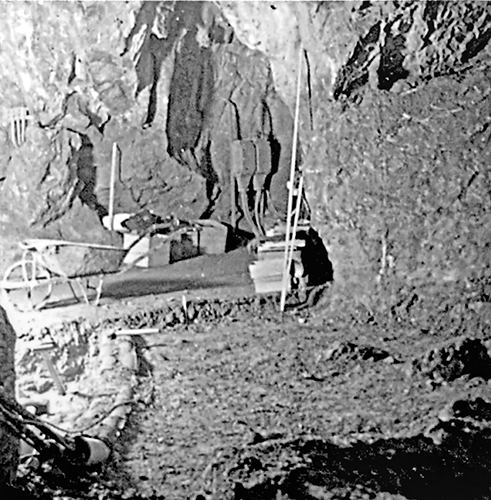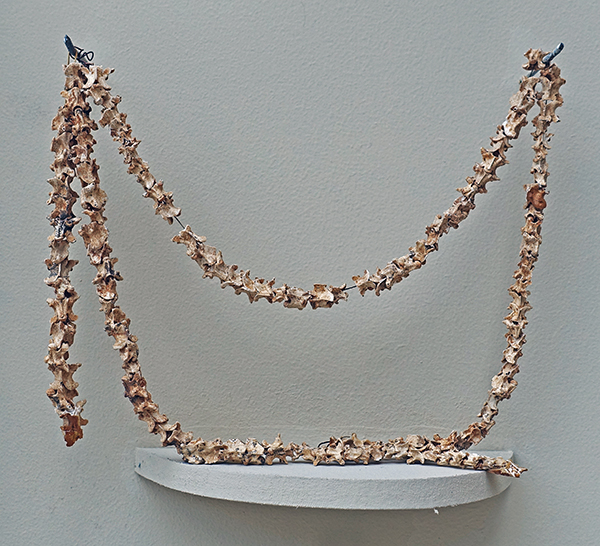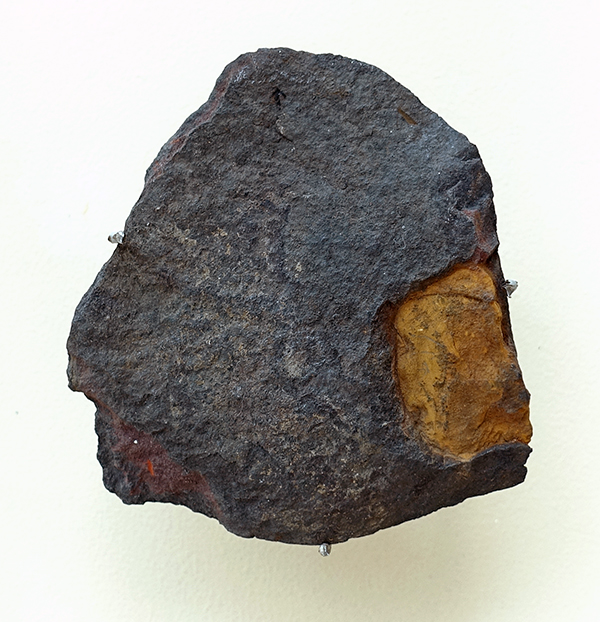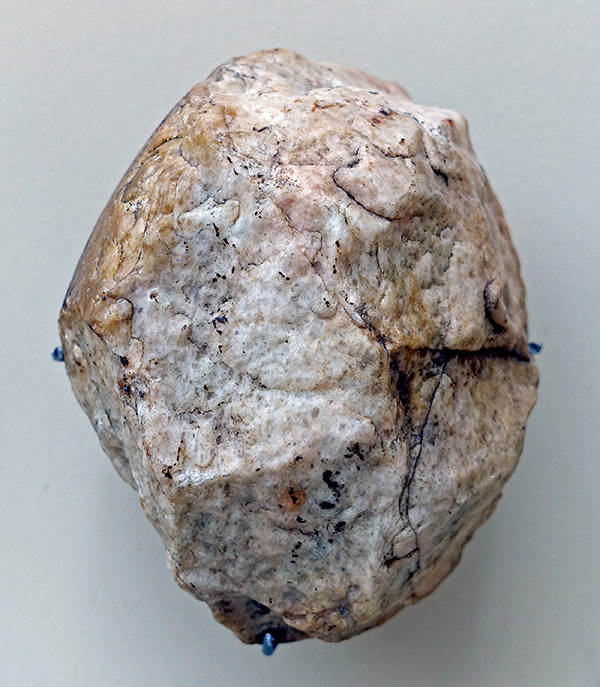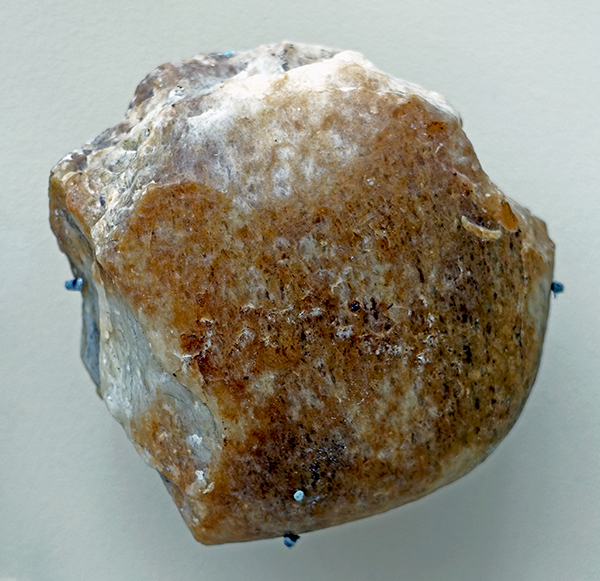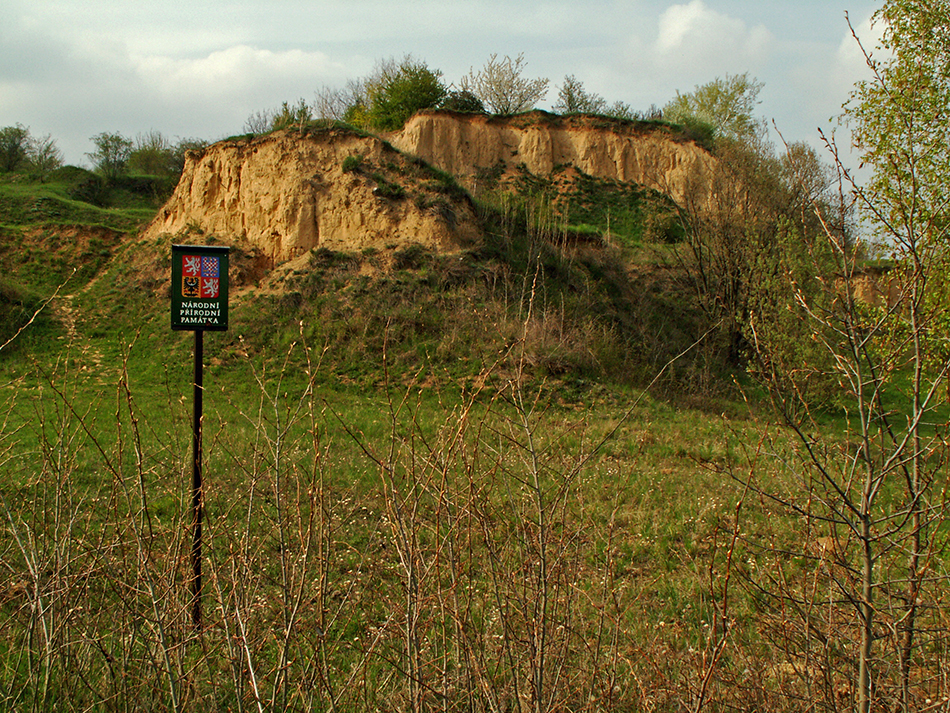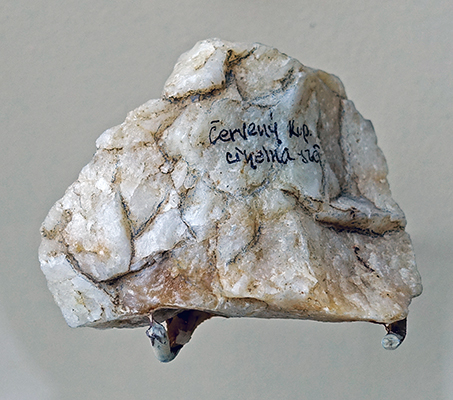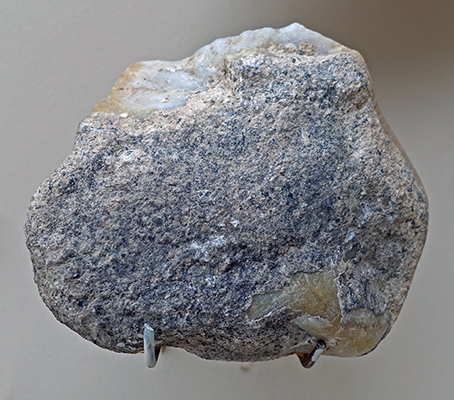Back to Don's Maps
 Mousterian (Neanderthal) Sites
Mousterian (Neanderthal) Sites Back to the review of hominins
Back to the review of hominins
Mladečské Caves and other early Palaeolithic sites in the Czech Republic
The Mladečské Caves are a unique system of underground caves located in the Czech Republic. The caves are situated in the northeastern part of the country, in the protected landscape area of Morava river near the town of Litovel. The system is made up of several caves, the largest of which is the Mladeč Cave, which is over 1.3 kilometres long. The Mladečské Caves are renowned for their impressive stalactites, stalagmites, and other unique cave formations.
One of the most fascinating things about the Mladečské Caves is their rich history. Archaeological evidence suggests that the caves were inhabited by humans during the Palaeolithic period, over 30 000 years ago. The remains of animals, as well as artefacts like stone tools and weapons, have been found in the caves. The discovery of these artefacts was a major breakthrough in the study of human history, as it shed light on the daily lives and habits of our ancient ancestors.
Today, the Mladečské Caves are a popular destination for tourists and spelunkers alike. The caves are open for guided tours, which allow visitors to explore the various chambers and marvel at the stunning formations that have taken thousands of years to form. In addition, the caves offer educational programs for schools and other groups, making them a valuable resource for learning about geology, archaeology, and the natural world. Overall, the Mladečské Caves are a fascinating and important natural wonder, with a rich history and much to offer visitors from all over the world.
( My thanks to Petr Havlíček for help with this translation - Don )
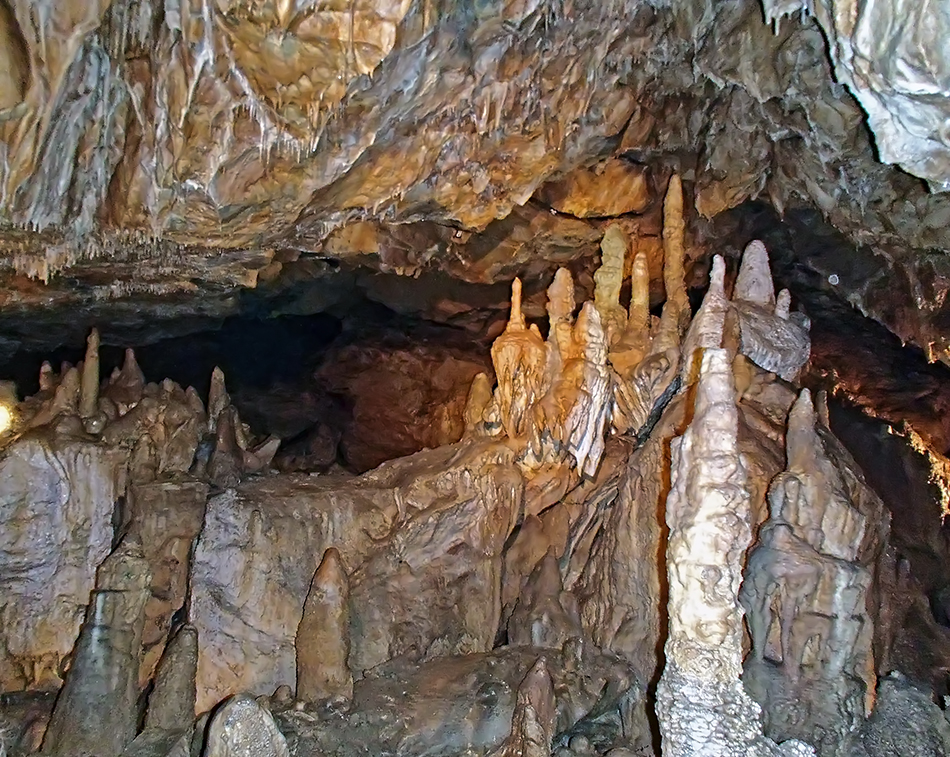
Stalactites and stalagmites in Mladečské Cave.
Photo: Nazgul02
Permission: Creative Commons Attribution-Share Alike 3.0 Unported license
Research by the Anthropos Institute in the Mladečské Caves, about 80 km north east of Brno.
Rephotography: Don Hitchcock 2018
Source and text: Display, Anthropos Pavilion/Moravian Museum, Brno, Czech Republic
In Old or Middle Palaeolithic sediments of Mladečské Caves, skeletons of snakes have been found.
Photo: Don Hitchcock 2018
Source and text: Display, Anthropos Pavilion/Moravian Museum, Brno, Czech Republic
Old Palaeolithic artefact from Mladečské Caves.
Photo: Don Hitchcock 2018
Source and text: Display, Anthropos Pavilion/Moravian Museum, Brno, Czech Republic
Early hominins
Recognition of the earliest traces of human presence is associated with a number of difficulties. The sparse settlement left only a small number of remains of which little has survived after so long. The earliest human products can easily be confused with pseudo-artefacts. These are objects created by natural forces (usually impacts in a stream of water), battered often more intensely than actual human artefacts.
Most of the artefacts of Old Palaeolithic man are found in riverine terraces, where the force of the water flow often caused mutual breaking of stones. Therefore, along with the actual products, there are the most pseudo-artefacts. Convincing, i.e. more complexly worked pieces only begin to appear in river terraces younger than 1 million years.
Because of the rounded form of the raw material, we speak of so-called pebble industries. They are dominated by various chisels and cores, and rarely a more complex polyhedral shape, a primitive biface or a coarse chopper.
Blades and the smaller components have largely disappeared due to natural processes. Most sites with such a sorted pebble industry are found in deposits of the South Moravian rivers. The worked pebbles occur mainly in in the body and on the surface of the Turonian Terrace, originating from the colder sections of the Cromerian interglacial, and may be 800 000 - 600 000 years old. Age of the finds from the terrace surface itself is of course uncertain.
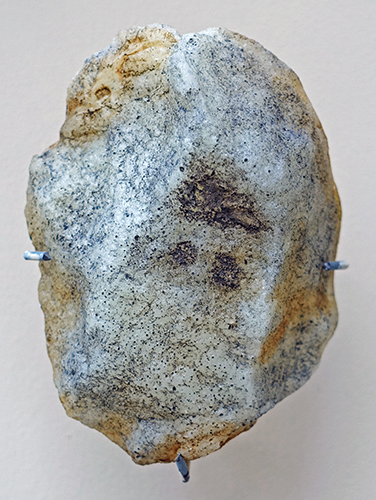
A unilaterally chipped quartz boulder from the PK VI soil (interglacial mindel-riss or holstein, circa 400 000 - 300 000 years old). Brickyard in Znojmo-Sedlesovice.
Photo: Don Hitchcock 2018
Source and text: Display, Anthropos Pavilion/Moravian Museum, Brno, Czech Republic
Undoubtedly pebble tools of the Old Palaeolithic type also come from surface finds (a polyhedral from Sokolonice and a chopper from Milovice, okr. Breclav).
Photo: Don Hitchcock 2018
Source and text: Display, Anthropos Pavilion/Moravian Museum, Brno, Czech Republic
Červený Kopec Hill, Red Hill National Natural Monument, near Brno.
This photograph shows clearly the loess of which the hill is made.
Photo: RuM
Permission: Creative Commons Attribution-Share Alike 3.0 Unported license.
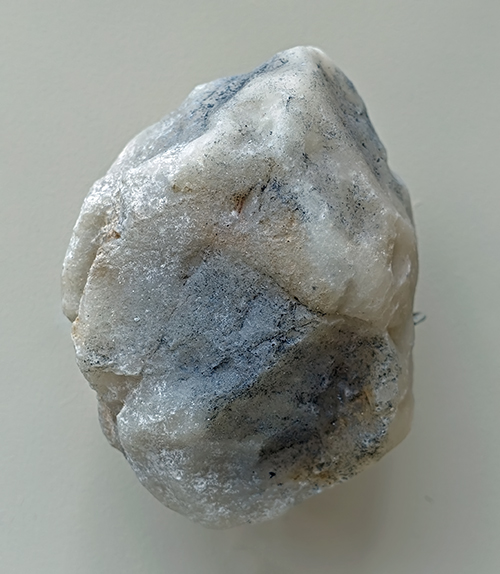
Much less evidence of human activity is found in loess walls of the present loam pits. However such finds are more reliable since no pseudo-artefacts could originate in fine aeolian sediments.
This completely worked quartz polyhedron found in the lower complex PK X on Červený Kopec Hill, Red Hill, on the southern outskirts of Brno is older than 780 thousand years. It lay in a layer below the paleomagnetic inversion, when the magnetic fields of the Earth were overturned.
Polyhedrons, spheroids and bolas (PSBs) are present in lithic series from the Lower Palaeolithic onwards and are found in several regions of the world. Nevertheless, very little is known about them.
Photo: Don Hitchcock 2018
Source and text: Display, Anthropos Pavilion/Moravian Museum, Brno, Czech Republic
Additional text: Cabanès et al. (2022)
Pebble chopper and core from the Middle Palaeolithic layers on Red Hill.
Photo: Don Hitchcock 2018
Source and text: Display, Anthropos Pavilion/Moravian Museum, Brno, Czech Republic
References
- Cabanès J. et al., 2022: Palaeolithic polyhedrons, spheroids and bolas over time and space, PLoS One, 17(7): e0272135. Published online 2022 Jul 28. doi: 10.1371/journal.pone.0272135
- Kozlowski S., Lozek V., Vlcek E., 2013: Hunters between East and West: The Paleolithic of Moravia, Springer Science & Business Media, 29 Jun 2013 - Social Science - 311 pages
- Maška K., 1903: Čelist šipecká, self published, 37 pp.
